Sewing Patterns for Beginners: Your Step-by-Step Guide to Start Confidently
- Home
- Casual Wear
- Sewing Patterns for Beginners: Your Step-by-Step Guide to Start Confidently
Sewing Patterns for Beginners: Your Step-by-Step Guide to Start Confidently
Learning to sew opens up a world of creativity, self-expression, and satisfaction. For anyone just starting out, sewing patterns for beginners are the perfect first step. They take the guesswork out of garment construction, offering a simple roadmap to transform fabric into something you can proudly wear or gift. With the right pattern and a bit of patience, even a complete novice can create something beautiful.
Many people hesitate to begin because sewing patterns look complicated at first glance. Lines, markings, notches, and instructions can feel overwhelming until you understand how they work together. The good news is that beginner patterns are designed to teach as you go. They simplify the process and build confidence with every stitch.
At Precision Alterations in Phoenix, we see this transformation every day. Clients walk in curious about how to start and leave inspired after discovering how approachable sewing can be. Whether you dream of making your first dress, top, or simple accessory, starting with beginner sewing patterns sets you up for success. The key is choosing the right pattern, preparing properly, and learning to trust the process because every expert sewer once started with their very first pattern.
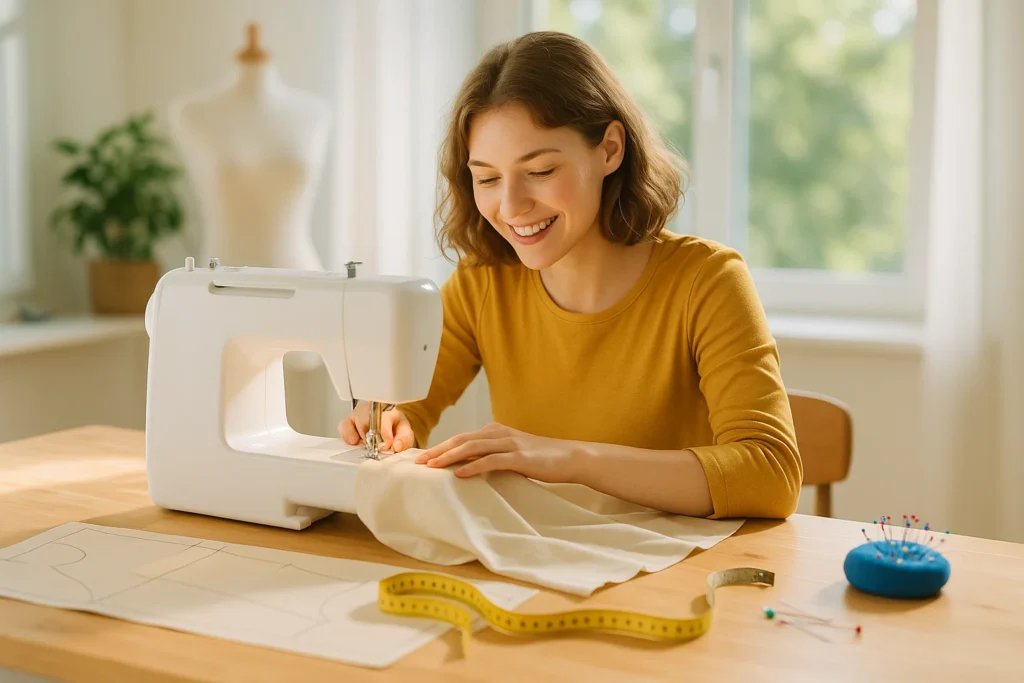
Understanding Sewing Patterns for Beginners
The journey to mastering sewing begins with understanding what a pattern actually does. A sewing pattern for beginners is more than paper and markings, it’s a blueprint that teaches you how to shape fabric into a finished garment. Each line, symbol, and number serves a purpose, guiding you through construction in a logical, repeatable way. Once you learn how to read these patterns, you’ll unlock the freedom to create clothing that fits your body and your style.
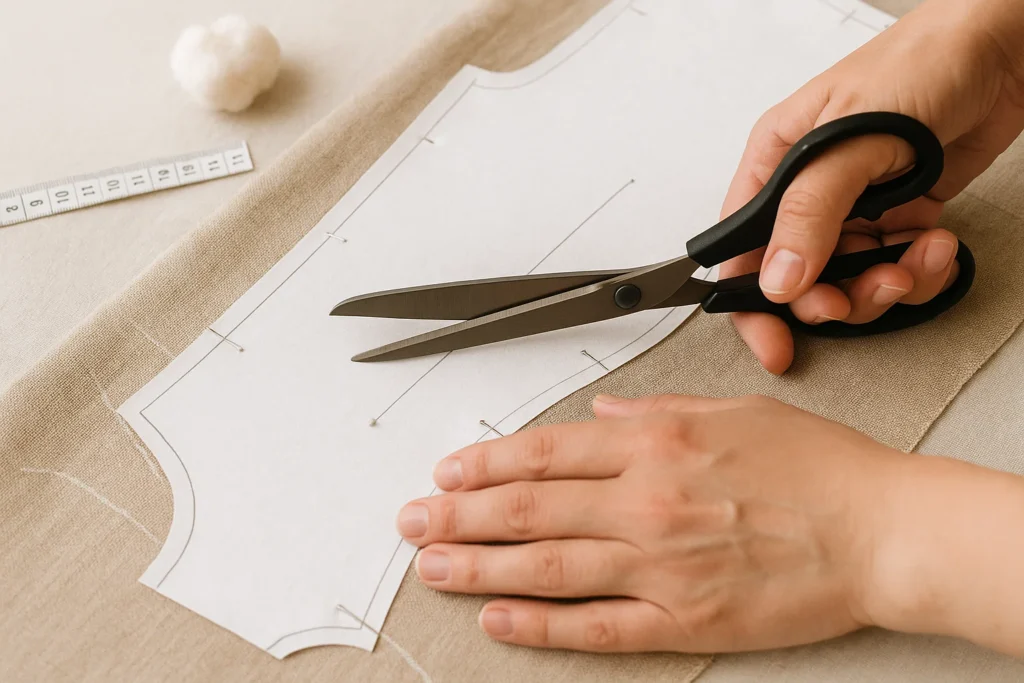
What Makes a Pattern Beginner-Friendly
When choosing beginner sewing patterns, look for simplicity. Patterns labeled “easy” or “learn-to-sew” are created specifically for those new to the craft. These designs usually feature:
- Straight seams and simple shapes for easier stitching and alignment.
- Minimal pieces, reducing confusion during cutting and assembly.
- Step-by-step instructions written in plain language with helpful diagrams.
- Basic fabrics like cotton or linen that are easy to handle and press.
Avoid starting with patterns that include zippers, pleats, or complex curves until you feel comfortable with the basics.
How to Read a Sewing Pattern
One of the most common challenges for beginners is understanding how to read pattern envelopes and guides. Here’s what to focus on:
- Front of the envelope: Shows the finished garment and difficulty level.
- Back of the envelope: Lists fabric suggestions, notions (like thread or buttons), and measurements.
- Pattern pieces: Each one corresponds to a part of the garment, sleeves, bodice, waistband, etc. and includes markings for alignment.
- Instruction sheet: Provides step-by-step assembly directions with matching diagrams.
Spend time studying these elements before cutting your fabric. The more familiar you become with a pattern’s layout, the smoother your sewing process will be.
Choosing the Right Fabric and Size
Even the best easy sewing patterns for beginners can go wrong if you pick the wrong fabric. Stick with stable materials like cotton, denim, or light twill while learning. Stretchy or slippery fabrics such as silk and jersey can be challenging for first-time sewers.
Before you begin, take your body measurements and compare them with the sizing chart on the pattern. Pattern sizing often differs from retail clothing, so following the chart ensures the best possible fit. If you’re unsure, choose the larger size, you can always make adjustments later.
The Importance of Preparation
Preparation is everything. Wash and iron your fabric before cutting to prevent shrinkage later. Carefully pin your pattern pieces to the fabric, following the grainline arrows shown on the pattern. Taking time at this stage prevents frustration during sewing and results in cleaner, more professional seams.
At Precision Alterations, we encourage beginners to bring in their first projects for guidance or fitting checks. Sometimes a little expert advice on seam allowance or adjustment techniques can turn a good project into a great one.
Understanding your pattern fully before you sew builds confidence. Once you know what each section means and how the pieces fit together, the rest of your project becomes an enjoyable creative experience rather than a guessing game.
Step-by-Step Guide to Sewing with Beginner Patterns
Once you’ve chosen your sewing patterns for beginners, it’s time to bring your project to life. The process may look intimidating at first, but with the right approach and patience, it becomes a rewarding experience. Precision and preparation make all the difference, and each small step builds your confidence as a new sewer.
Step 1: Prepare Your Materials
Start by laying out everything you need before you begin sewing. This includes your pattern pieces, washed and ironed fabric, matching thread, scissors, pins, and a measuring tape. Having your tools ready saves time and helps you stay focused. Always double-check that your fabric aligns with the grainline indicated on the pattern.
Step 2: Cut and Mark Carefully
Use sharp fabric scissors to cut along the pattern lines precisely. Beginners often rush this step, but accurate cutting is key to a garment that fits well. Transfer all markings from the pattern onto the fabric using tailor’s chalk or a washable pen. These small notches and lines guide your stitching later and help pieces align perfectly.
Step 3: Follow the Instructions Slowly
Every beginner sewing pattern comes with numbered steps and diagrams. Read through the full instructions once before you start sewing to understand the sequence. Then follow each step carefully, one at a time. Take breaks between stages to double-check seams, alignment, and fit. Rushing often leads to mistakes that are harder to correct later.
Step 4: Practice Straight Seams and Press as You Go
Straight seams form the foundation of sewing. Take your time to sew slow, even lines, keeping your edges consistent. Use pins or clips to hold the fabric together while sewing. After each seam, press it flat with an iron, this small habit gives your finished piece a professional look and helps the garment hold its shape.
Step 5: Check the Fit Before Final Assembly
Before attaching final details like sleeves or waistbands, check the fit by loosely basting the main pieces together. Try the garment on or place it on a dress form. This is your chance to make small adjustments before committing to permanent seams. If something feels off, Precision Alterations can assist with adjusting pattern pieces or guiding you through small alterations for better results.
Step 6: Add Finishing Touches
Once your seams are secure and the fit feels right, add any finishing touches such as hemming, buttons, or simple decorative topstitching. Use this stage to refine your craftsmanship and develop your own creative touch.
Working with easy sewing patterns for beginners is about learning technique, gaining confidence, and seeing your progress with every stitch. Each project teaches you more about fabric behavior, pattern alignment, and the joy of creating something unique. With practice, these steps become second nature, and you’ll be ready to move on to more advanced designs with ease.
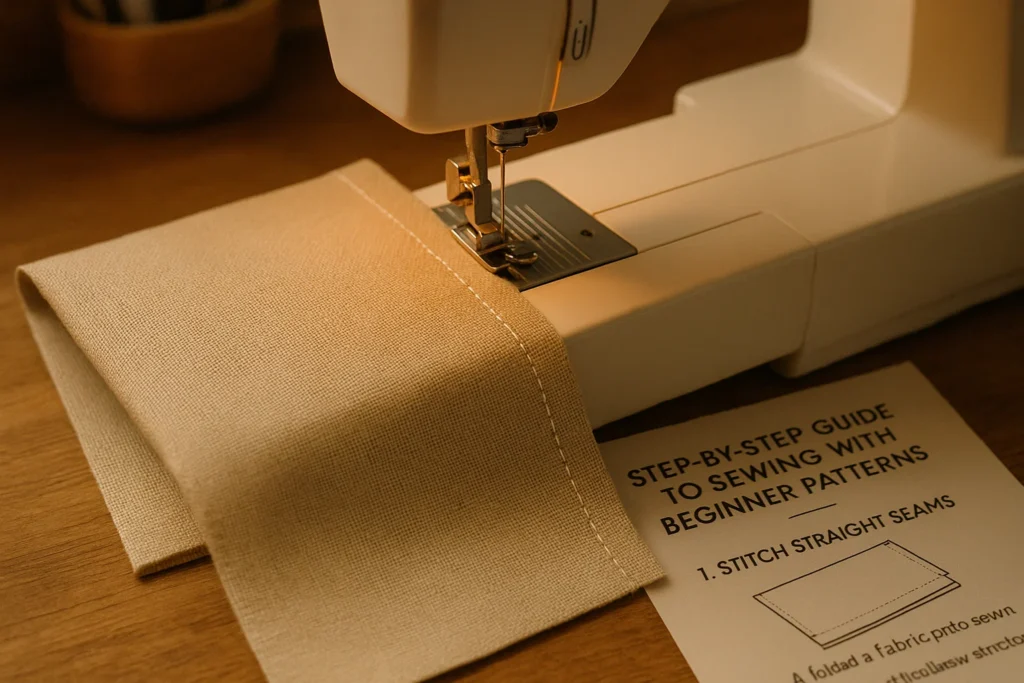
Building Confidence and Moving Beyond Beginner Patterns
Completing your first project using sewing patterns for beginners is an achievement worth celebrating. It proves that you can turn a flat piece of fabric into something functional and stylish. More importantly, it gives you the confidence to explore new techniques and more advanced projects. Every stitch builds skill, and every finished garment reminds you how far you’ve come.
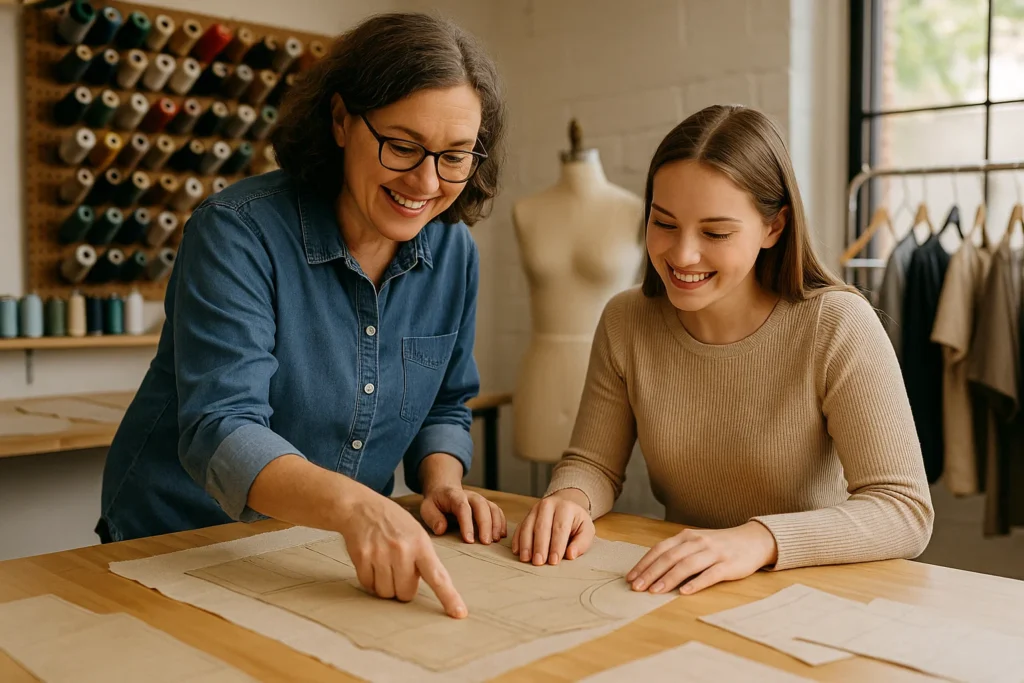
Experimenting with New Styles
Once you’re comfortable with simple tops, skirts, or pillow covers, try branching out to patterns that introduce small challenges. A beginner sewing pattern for a dress or button-up shirt adds features like darts, facings, or basic closures. These small additions teach precision and prepare you for more detailed garments. Take your time and treat each project as a learning opportunity rather than a test.
Understanding Fit and Adjustments
Perfecting the fit of your garment is one of the most satisfying parts of sewing. It’s also where many beginners realize the value of professional insight. If a piece feels tight in one area or loose in another, minor alterations can make a big difference. The team at Precision Alterations in Phoenix specializes in refining fit and showing clients how small adjustments can transform the way a garment feels and looks.
Using the Right Tools and Techniques
As you grow in skill, invest in quality tools such as sharp shears, an iron with steam control, and a reliable sewing machine. These essentials make the process smoother and your results more consistent. Explore new finishing methods like French seams or topstitching for added durability and polish. Every improvement, no matter how small, helps you sew with more confidence and enjoyment.
The Joy of Creating Something Custom
Sewing allows you to express your personality through fabric, color, and design. When you understand patterns and fit, you can customize any project to your taste. You’ll soon find yourself adjusting lengths, mixing fabrics, and modifying details. These creative choices make each piece uniquely yours.
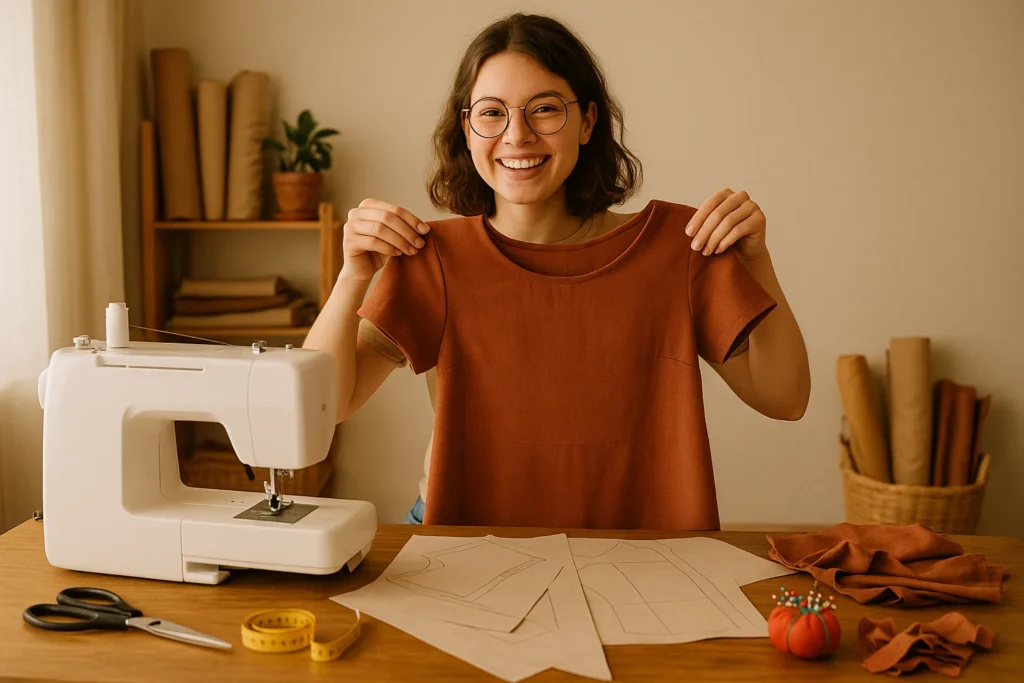
Conclusion: Stitching Confidence One Pattern at a Time
Learning with sewing patterns for beginners is the perfect way to start your creative journey. Each project teaches patience, precision, and problem-solving while allowing you to create something meaningful with your own hands. What begins as folded paper and fabric quickly becomes a source of pride and accomplishment.
At Precision Alterations in Phoenix, we see beginners transform their skills every day. Whether you are learning how to read patterns, checking garment fit, or adjusting a finished piece, expert guidance can help you grow faster and with more confidence. Our team is always ready to offer advice, fitting assistance, or simple encouragement as you develop your sewing abilities.
Visit Precision Alterations to explore pattern-friendly services, get personalized fitting support, and experience how small adjustments make a big difference in your finished work. Sewing is more than a skill, it’s a form of self-expression, and every stitch brings you closer to mastering it.
Frequently Asked Questions
What are the best sewing patterns for beginners?
The best sewing patterns for beginners are simple designs with minimal pieces, straight seams, and clear instructions. Look for “easy” or “learn-to-sew” labels and choose patterns made for cotton or linen fabrics.
How do I read a sewing pattern?
Start with the front and back of the pattern envelope. The front shows the finished look, while the back lists fabric types, notions, and measurements. Inside, the instruction sheet guides you step-by-step through cutting and assembly.
Can I adjust a sewing pattern if it doesn’t fit perfectly?
Yes. Minor adjustments like lengthening, shortening, or widening seams are common. Precision Alterations can assist in making professional fit corrections to ensure your garment flatters your shape.
What fabric should I use for beginner sewing projects?
Stable fabrics such as cotton, broadcloth, or light denim are best for learning. They are easy to handle, press well, and hold shape during stitching. Avoid slippery or stretchy fabrics until you gain more experience.
Where can I get help with sewing patterns in Phoenix?
Visit Precision Alterations in Phoenix for expert guidance on pattern reading, fitting, and finishing. Our team helps beginners refine their technique and build confidence with every project.
For those looking to complete their look with an affordable, high-quality suit, visit our partner company Van Allan’s Men’s Fashion, proudly serving Phoenix with timeless style and exceptional craftsmanship.
SUBSCRIPTION
Subscribe to our newsletter
Store Hours Phoenix
Monday – Friday
10:00am – 06:00pm
Saturday
10:00am – 04:00pm
Sunday
Off
Tucson Store Hours
Monday – Saturday
09:00am – 07:00pm
Sunday
11:00am – 05:00pm
Contact Us
- +602 2750599
- precisionalterations@yahoo.com
- Arcadia Crossing 4539 E. Thomas Road, Suite 104, Phoenix, AZ 85018
